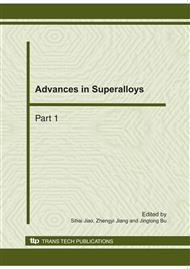p.976
p.980
p.987
p.991
p.996
p.1000
p.1004
p.1009
p.1013
Environmental and Economic Assessment of Pre-Training Electrolytic Aluminum Production - A Case Study of China
Abstract:
A life cycle assessment was carried out to estimate the environmental and economic impact s of pre-training electrolytic aluminum systems. The technology significantly contributed to non-carcinogens, respiratory inorganics, terrestrial ecotoxicity, global warming and non-renewable energy potential impacts. The technology played only a small role in the adverse impact of carcinogens, aquatic ecotoxicity, and mineral extraction categories, while the influence of the technologies on the way other elements affect the environment was ignorable. Specifically, the emissions from the aluminum oxides production and electricity consumption stages involved played an important role, while potential impact generated from transport, infrastructure, waste treatment, cryolite production, and aluminum fluoride production was quite small. Energy generation based on natural gas is an effective way to minimize overall environment impact. This research indicates that there are high potentials for improving environmental performance of the electrolytic aluminum production in China.
Info:
Periodical:
Pages:
996-999
Citation:
Online since:
October 2010
Authors:
Price:
Сopyright:
© 2011 Trans Tech Publications Ltd. All Rights Reserved
Share:
Citation:


